Innovative tools our quality engineers are excited about these days
Do you like to stay in the know about the most up-and-coming software testing tools? We do too! Due to the size of our team (100 testers) and to the nature of our services, we’re fortunate to have the chance to work with tools of every sort for every aspect of quality and testing approach.
As testing consultants, we need to discern what tools could best meet the needs for each team we work with according to their goals and context, so we’re always keeping our eyes peeled for new solutions.
These days, we’ve been buzzing about plenty of tools we’ve come across, hosting tutorials and internal chats to share knowledge about them with one another and we figured we’d share them with you in this article!
Here are the top software testing tools that Abstracta’s keeping an eye on in 2020.
1) Apptim
A new tool created by some of our very own Abstracta team members (so, yes, naturally we’re excited about it), Apptim empowers mobile developers and testers to easily test their apps and analyze their performance to prevent any critical issues from going live. While the user is able to run an exploratory testing session within Apptim on Android or iOS devices, the tool automatically measures app render times, power consumption, resource usage and captures crashes. It then compiles all of these results in an in-depth report that also offers suggestions for improvement.
Why do we like it?
- Apptim generates easy-to-read reports to check mobile app performance, review logs and crash details
- Works seamlessly with Android and iOS apps, no SDK required
- Automatically capture videos, screenshots and evidence to quickly report new bugs in all your apps
- Generate local reports and use its out-of-the box integration to publish them to your Jira project
- Compare the app performance of two different builds, find out what changed and identify potential new performance issues
Visit the Apptim website.
2) BlazeMeter
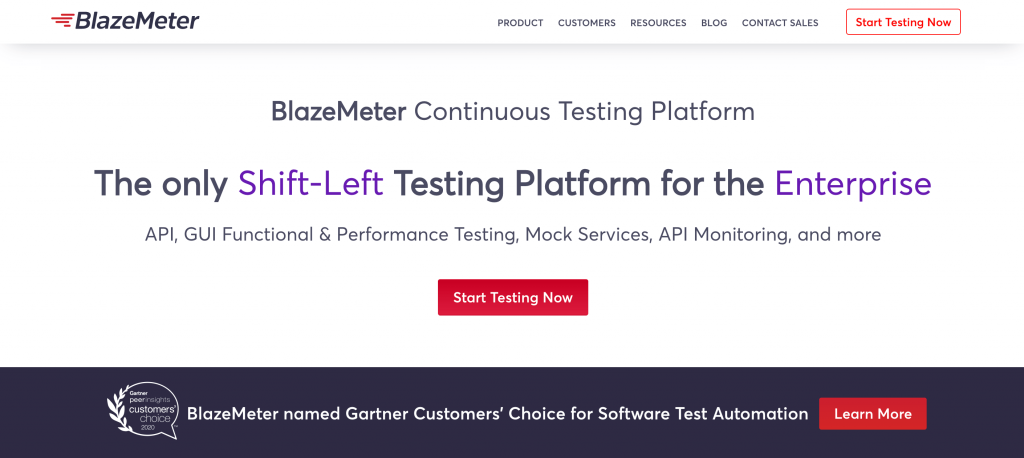

While not new, BlazeMeter is a 100% JMeter-compatible, self-service web load testing cloud. Load tests are easily created and configured online. Once these tests are created, it is possible to run them either using the BlazeMeter Web UI or using the BlazeMeter REST API. The second option means that instead of manually starting the tests, users simply create an automated script that will automatically run a predefined test via the API.
Why do we like it?
- It helps teams facilitate shift-left and also shift-right testing
- It scales the capabilities of JMeter, one of our preferred open source load testing tools enabling the user to perform massive load tests
- The BlazeMeter team is a huge contributor to the JMeter open source community, with its engineers developing plug-ins for everyone’s benefit
- Integrates nicely with Gatling, Taurus, Jenkins, CA APM, New Relic, Cloudwatch and other tools
So what’s new?
- BlazeMeter has released a plugin for stress testing video streaming services which we’ve been using a lot lately in our projects, working with telecom providers who need to validate that their infrastructure can handle tens of thousands of concurrent viewers at once
- Another useful plugin they just released allows developers to test the performance of their Citrix apps for continuous feedback and improvement.
- BlazeMeter made a tool that converts scripts for Loadrunner to JMeter, making it easier than ever to switch over to open source load testing
- Mainframe system testers can now use JMeter, Taurus and BlazeMeter to shift left their performance testing
Visit the BlazeMeter website.
3) BlocklyJMX
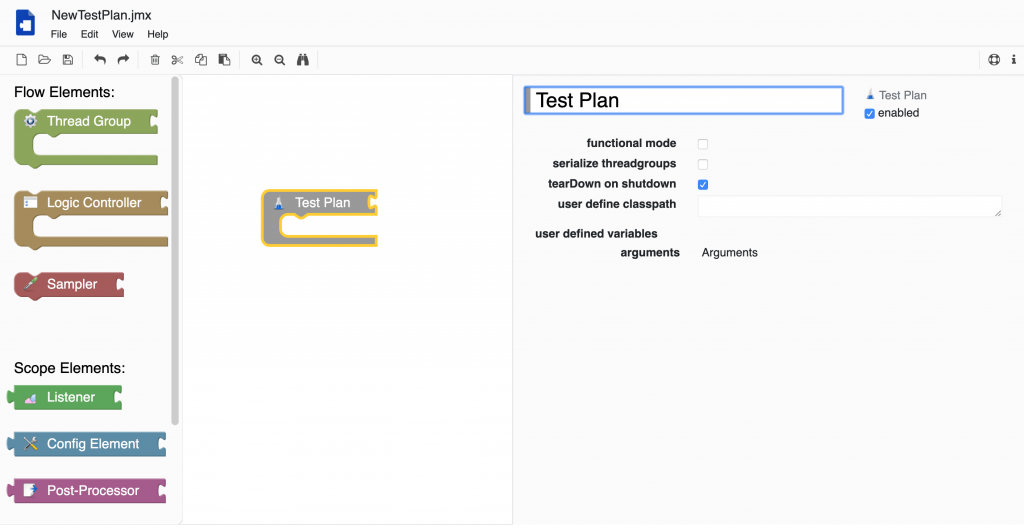

Another tool built around open source JMeter, BlocklyJMX is a new web-based alternative for viewing and editing test plan files. While it’s not a mature tool, it delivers on what it aims to achieve. It isn’t a JMeter substitute, but a rather promising alternative to JMeter’s UI when creating scripts.
Why do we like it?
- It’s very intuitive and easy to use
- The developer responds to feedback quickly (they fixed a bug we found in just three days).
- It’s made with Google’s Blockly library which is inspired by Scratch, an MIT project focused on simplifying the process of learning how to program by making things clearer and easier to recognize with its visual programming paradigm. This also makes it great for beginners!
Open BlocklyJMX.
→ Read our full review of BlocklyJMX here.
4) GXtest
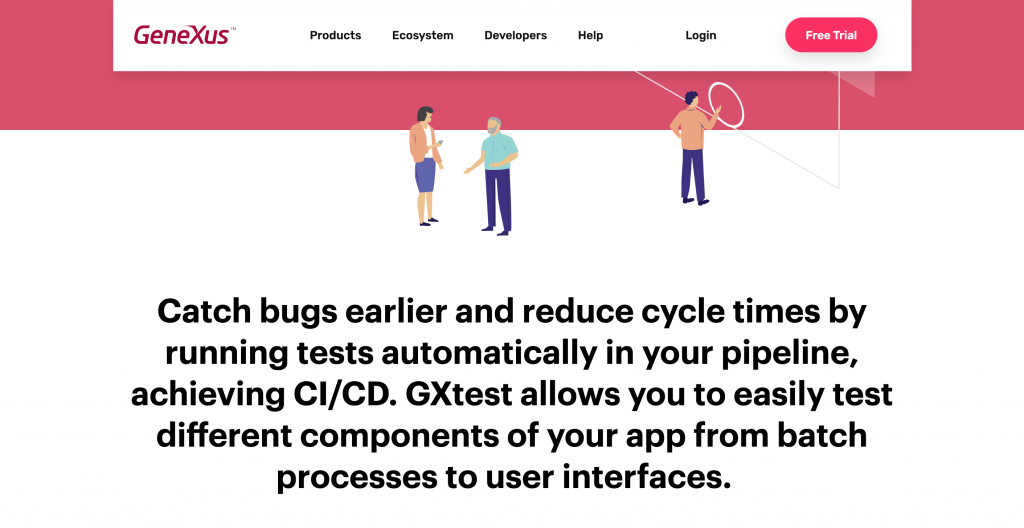

GXtest is the test automation tool developed specifically for automating tests for software applications developed with GeneXus. Recognized in 2019 by the Forrester Wave Low-Code Development Platforms Report, Genexus is a rising tool that aims to make creating, evolving and maintaining software applications easier.
GXtest was developed by our three co-founders over a decade ago and is actually what gave way to the founding of Abstracta! Over the years, it’s gone through several iterations and today, we’ve released the fourth version alongside GeneXus with features that help to shift-left testing.
So what’s new?
- GXtest is now embedded within the GeneXus IDE software itself
- It enables an agile and DevOps approach, allowing developers and testers to work in a complementary way for creating different testing capabilities in GeneXus code
- Easily generate UI tests recording the user flow over the application with GXtest Recorder
- Developers can find bugs earlier and reduce cycle times by running tests automatically in their CI/CD pipeline
- Easily test different components of an app from batch processes to user interfaces
- New performance testing capabilities for GXtest 4 are coming next!
Visit the GXtest website.
→ Read this case study about our collaboration with GeneXus to develop GXtest.
5) Reflect
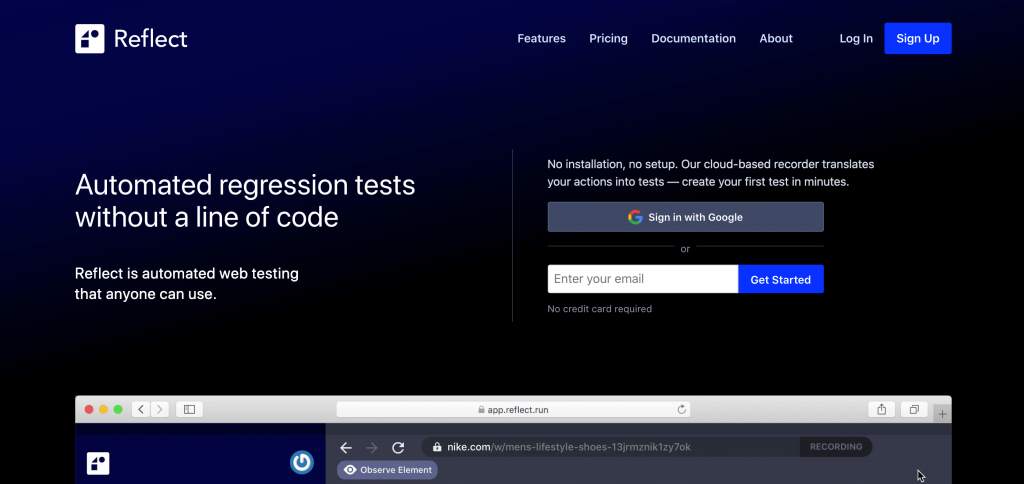

Reflect is a new code-less test automation tool that we think is a great option for manual testers who want to start automating web regression testing. Its creators needed to find a cost-effective, zero-code, zero-installation tool for recording and executing UX tests that could be easier to run and maintain. When they didn’t find what they were looking for, they built one!
Why do we like it?
- Great hover tracking: It has a click-and-drag/drag-and-drop/mobile swipe support that exactly replicates what the user does. Also, you can exactly replicate clicks/hovers/taps/swipes/drags which would normally fail in other tools.
- While you’re recording your test, a very easy-to-read test plan is created automatically on the side of the page.
- The Reflect team delivers top-notch customer support. The tool is still new, so their team is very involved with its users and open to feedback. We’ve seen them implement changes due to user requests and in a very quick manner!
- And so much more…
Visit the Reflect website.
→ Check out our full review of Reflect here.
6) Testim
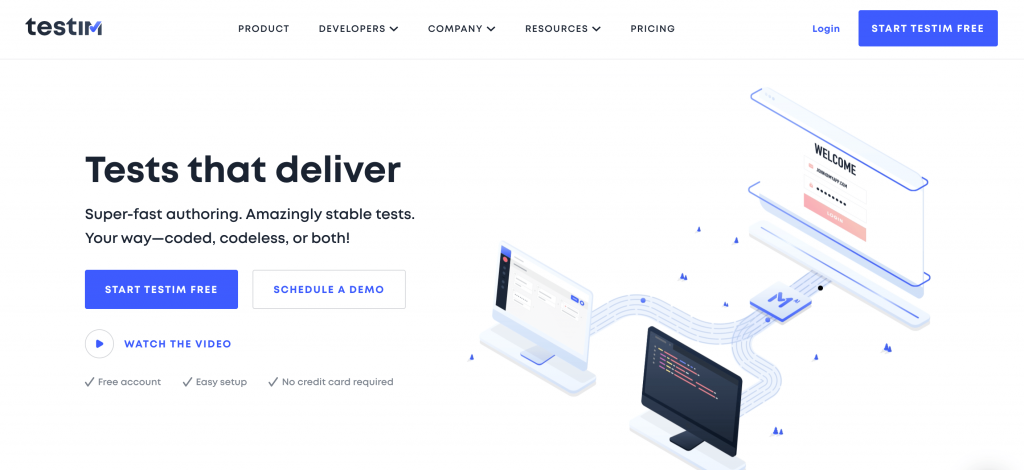

It’s no secret that we typically advocate for open source tools whenever possible, but our team has quickly been taken by this new tool. Testim.io leverages machine learning for the authoring, execution and maintenance of automated test cases. It also boasts various plugins to integrate the tests into a CI/CD Jenkins pipeline, Jira, and personalized grids for the test execution.
Why do we like it?
- This is a great tool to choose if you are looking to improve test maintenance and reduce costs in relation to that
- It provides the flexibility to author stable customized tests—either codeless or coded making functional testing accessible to more members of your team
- It integrates with just about any other imaginable tool (Jenkins, Circle CI, Jira, Slack, Github, Trello…), so it is very easy to adapt to your processes
Visit testim.io.
→ Check out our full review of Testim here.
7) UP9
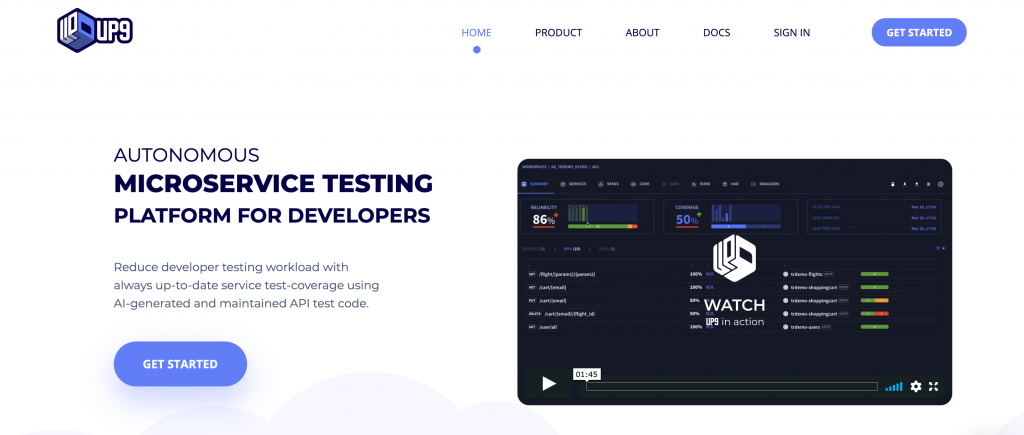

UP9 just came out of stealth last week, a next-gen platform for autonomous testing. It leverages machine learning with the aim to offer an alternative to traditional software testing, improving developer productivity by generating significantly faster test coverage and providing automatic service observability.
So what’s new?
The tool auto generates test code in the background based on service traffic and triggers automatic fault detection and continuous reliability analysis. It constantly runs and assesses the system reliability and offers rich reports.
This brand new tool has promising potential because of the outstanding engineers behind it like Alon Girmonsky (who previously founded BlazeMeter) and Andrey Pokhilko (who was previously at BlazeMeter and a huge open source contributor to JMeter and the Taurus projects).
Still in closed beta, we are learning more about what projects we can use the tool for and which features we like the most… So stay tuned for a further review!
Visit the UP9 website.
Keep Exploring New Tools
That’s just a short list of software testing tools that are either new to the market or are releasing new, exciting capabilities in 2020.
What do you think? What other tools would you add to this list? Please, let us know in the comments!
Recommended for You
14 Best Performance Testing Tools and APM Solutions
12 Top Test Automation Tools to Try in Your Next Project
Tags In


Abstracta Team
Related Posts
The Everything Else | The One About Feedback
How did you feel the last time you received feedback? And when was the last time you were on the giving end? Feedback makes people feel a little squirmy, and the harsh consequence is that sometimes we run away from it. In today’s episode, Vera…
Checklist: 8 Ways to Improve JMeter Scripts
Download our Checklist for Improving JMeter Scripts! As a professional software testing services company, for some time now we have been working to improve JMeter scripts for our clients so as to enable them to run performance tests quickly and easily with the help of…
Search
Contents
Categories
- Acceptance testing
- Accessibility Testing
- AI
- API Testing
- Development
- DevOps
- Fintech
- Functional Software Testing
- Healthtech
- Mobile Testing
- Observability Testing
- Partners
- Performance Testing
- Press
- Quallity Engineering
- Security Testing
- Software Quality
- Software Testing
- Test Automation
- Testing Strategy
- Testing Tools
- Work Culture





